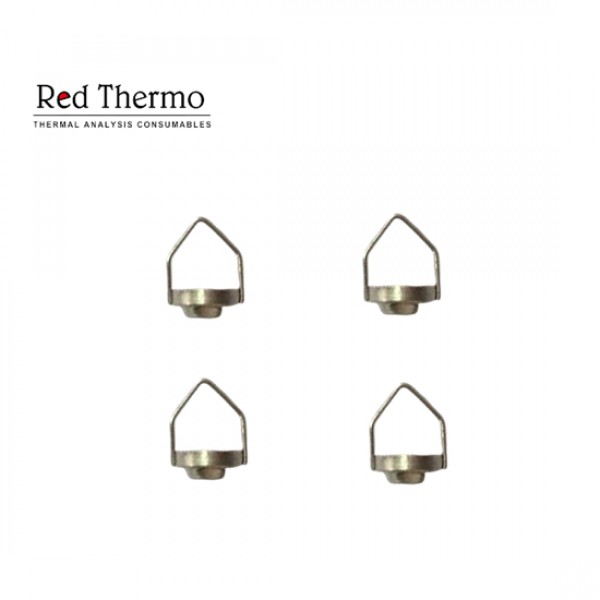Your cart is empty.
shop now
Your cart is empty.
shop now
While the use of high-quality dsc crucibles can significantly enhance the quality and reliability of DSC analysis, there are still some common challenges that researchers may encounter when working with these specialized containers. Understanding these challenges and addressing them can help to ensure the success of polymer analysis experiments.
1. Sample-crucible interactions: Unwanted interactions between the polymer sample and the crucible material can lead to inaccurate DSC measurements or the introduction of artifacts in the data. This is particularly problematic when the polymer sample reacts with the crucible material or when the sample adheres strongly to the crucible surface, affecting heat transfer and thermal behavior.
2. Pressure and volume changes: Polymers can undergo significant volume changes or produce gaseous byproducts during thermal events, leading to pressure buildup within the crucible. Improper containment or sealing can result in sample loss, altered thermal behavior, or even damage to the DSC instrument.
3. Contamination and carryover: Residues from previous experiments or improper cleaning of the crucibles can lead to cross-contamination, affecting the purity of the polymer sample and introducing errors in the DSC measurements. Careful handling and cleaning protocols are essential to maintain the integrity of the crucibles and the reliability of the data.
4. Reproducibility issues: Variations in crucible performance, such as inconsistencies in material properties or manufacturing tolerances, can contribute to a lack of reproducibility in DSC results, especially when comparing data across different experiments or laboratories. Careful selection and quality control of the crucibles are necessary to ensure consistent and reliable measurements.
5. Limitations in temperature range: The maximum temperature range of the crucible may not always be sufficient for the analysis of certain polymer samples, particularly high-performance or engineering polymers that require extended thermal testing. The choice of crucible material and design must be compatible with the expected temperature requirements of the polymer analysis.

To overcome these challenges, polymer researchers should adopt best practices for crucible selection, handling, and maintenance, as well as implement robust experimental protocols and quality control measures. By addressing these common challenges, researchers can unlock the full potential of DSC analysis and obtain accurate, reliable, and reproducible data for their polymer studies.
Proper handling and maintenance of thermal analysis crucibles are crucial for ensuring the accuracy, reliability, and reproducibility of DSC experiments, particularly in polymer analysis. Here are some best practices to consider:
1. Careful cleaning and storage: Crucibles should be thoroughly cleaned after each use to remove any residues or contaminants that could affect subsequent experiments. Cleaning methods may involve rinsing with appropriate solvents, ultrasonic baths, or thermal treatments, depending on the crucible material and the nature of the polymer sample. Crucibles should be stored in a clean, dry environment to prevent contamination.
2. Inspection and quality control: Regularly inspect the crucibles for any signs of wear, damage, or deformation, which could compromise their performance. This includes checking for cracks, dents, or changes in the surface characteristics. Implement a quality control process to ensure that the crucibles meet the required specifications and are suitable for use in DSC analysis.
3. Calibration and standardization: Periodically calibrate the crucibles using standard reference materials or certified thermal analysis standards. This helps to ensure that the crucibles are providing accurate and consistent thermal data, and can identify any potential issues with the crucibles or the DSC instrument itself.
4. Proper sample loading: Carefully load the polymer sample into the crucible, ensuring that the sample is evenly distributed and that the crucible is not overfilled. Improper sample loading can lead to uneven heat transfer or pressure buildup, affecting the reliability of the DSC measurements.
5. Crucible-specific experimental protocols: Develop and follow specific experimental protocols for each type of crucible used in the DSC analysis. This may include adjustments to heating/cooling rates, sample masses, or other parameters to optimize the performance of the crucible and the quality of the DSC data.
6. Crucible traceability and documentation: Maintain detailed records of the crucibles used in each experiment, including their unique identification, material, size, and any relevant history or maintenance information. This traceability can be crucial for troubleshooting, data interpretation, and ensuring the reproducibility of results across multiple experiments or laboratories.
By adhering to these best practices for crucible handling and maintenance, polymer researchers can minimize the impact of crucible-related factors on the accuracy and reliability of their DSC analysis, leading to more insightful and actionable data for their polymer studies.
The implementation of best practices for crucible handling and maintenance is crucial for maintaining the integrity of the DSC measurements and ensuring consistent, reproducible results. From careful cleaning and storage to proper sample loading and crucible-specific protocols, these practices help to minimize the impact of crucible-related factors on the polymer analysis.